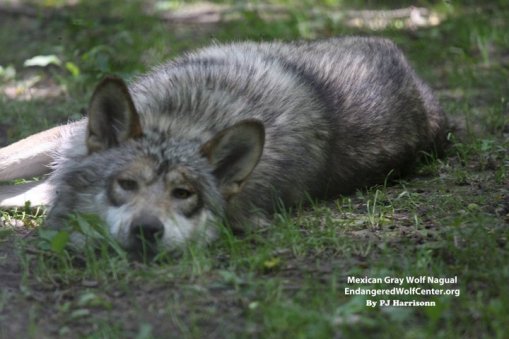10
May
In The NEWS: Gray Wolf’s Anatomy: Saving a Species

CHICAGO (MCT) — It is not a scene you expect to witness: a wolf, out cold, immobilized, its feral snout inside the giant doughnut ring of a high-tech medical device.
It’s also striking purely on the level of language: a canine in a CAT scan. The Brookfield Zoo recently used the internal imaging technology common in human medicine to check its eight Mexican gray wolves for nose cancer.
“¦
Brookfield is leading, and publicizing, a study of the Mexican wolves _ a smaller, endangered subspecies of the North American gray wolf _ in hopes of determining potential causes of a higher-than-expected incidence of nasal carcinomas in the animals.
The Mexican wolf situation illustrates some of the potential complications of captive breeding plans. Their subspecies was nearly extinct in 1980, but seven captured animals have yielded a captive population now numbering 283, and another five dozen living in the wild in the Southwest. Such a small starting point has raised concerns about whether the genetic diversity is adequate.
“We are trying to understand what is the role the genetic links play, if any, in the nasal tumors,” said Dr. Carlos Sanchez, an associate veterinarian at Brookfield and a leader of the study. “Are we seeing more cancer in this animal because they are inbred, or not really?”
“¦
Taking the trouble to put them under means the staff seized the opportunity in late April to give them all full physicals, including blood work, heart and lung X-rays and a grooming treatment similar to what the wolves’ domestic cousins might receive at a dog salon: nails clipped, ears and teeth cleaned _ everything but the cute haircut and jaunty bandanna tied around the neck at the end.
There’s another research project to contribute to as well. Department of Agriculture staff members in Arizona, where Mexican gray wolves have been released, want to know the distance between the upper and lower canines. The veterinary staff opened the jaws and, with calipers, made the measurements.
The data, in conjunction with close examination of bite marks on downed farm animals, will help determine which predator is responsible and whether the U.S. Department of Agriculture will compensate farmers for their losses.
“They can say, ‘This is not a wolf. It was a puma,’ ” Sanchez said. Such information could keep the wolves safer. Coyotes are also present in their habitat, and “feral dogs are the No. 1 cause of problems,” he said, but wolves, given their reputation, are often first to be blamed.
Laid out on a table, their blond and salt-and-pepper coats gently heaving, the wolves really do look, and smell, like dogs. The similarities are perhaps more pronounced with the Mexican wolves, which are smaller than their gray wolf brethren and top out at about 80 pounds.
The study began because 14 nasal tumors have been found in Mexican gray wolves in the U.S. and Mexico, said Peter Siminski, director of conservation and education at the Living Desert in Palm Desert, who coordinates the Assn. of Zoos and Aquariums’ Species Survival Plan for the Mexican wolf.
In addition to looking at the live animals, Sanchez and Dr. Randi Drees, a veterinarian from the University of Wisconsin, will put the preserved skulls of 175 Mexican gray wolves under the CAT scan as they are shipped to Brookfield in coming months.
This will give a better picture of the history of the tumors in the known population. If a genetic link is ruled out, scientists will have to look more closely at other potential causes for the cancers, including environmental and viral.
“¦
“They can’t tell us they have something in their nose which is bothering them, so for us, this is the perfect way to look into their nose,” Drees said, looking at the screen. “This is absolutely how we want to see it. … The white structure, those are the bones. They’re normal. They’re intact. And then in the middle here we have mainly air.”
“This,” Sanchez added, “is how a normal nasal cavity is supposed to look.”
*****
Read the full article here.
Take Action
More Mexican wolves are desperately needed to strengthen the wild population’s genetics and increase their numbers. CLICK HERE to write a letter to USFWS Southwest Regional Director Benjamin Tuggle and Interior Secretary Ken Salazar and tell them that it’s time to put more wolves into the wild where they belong.



